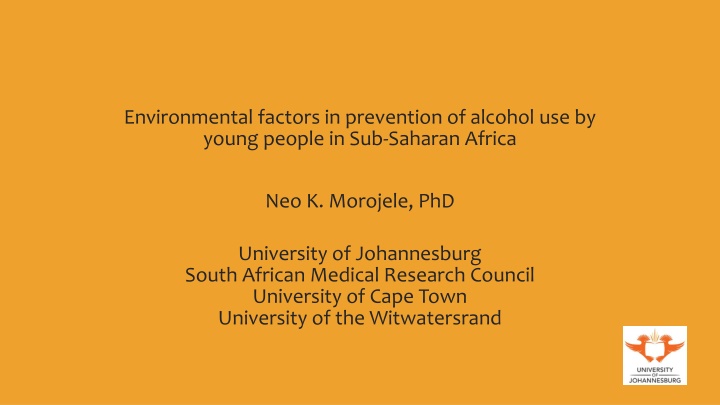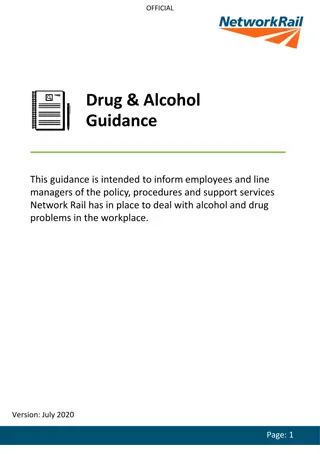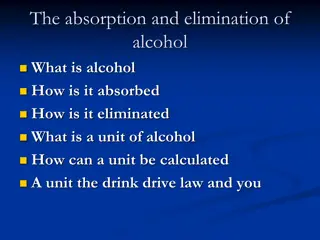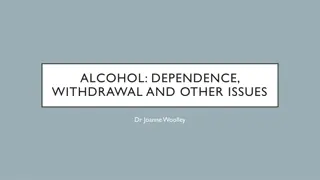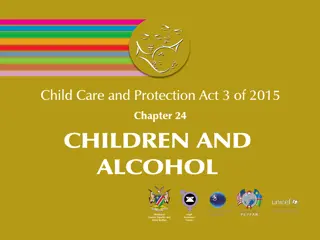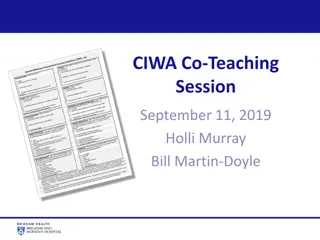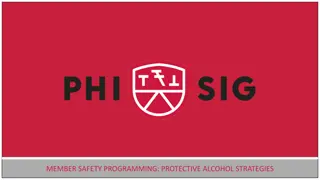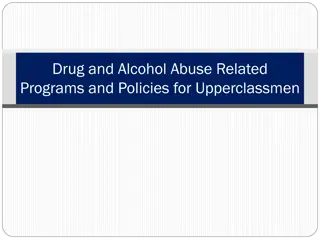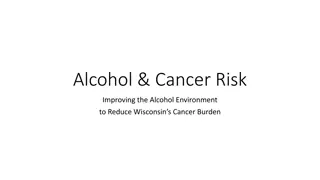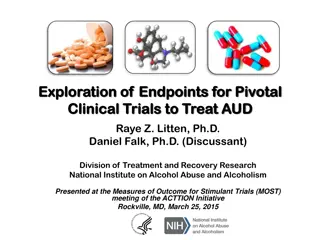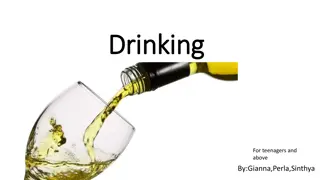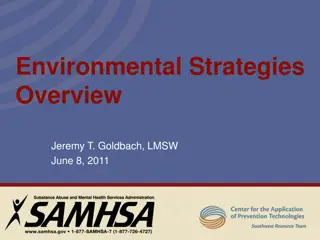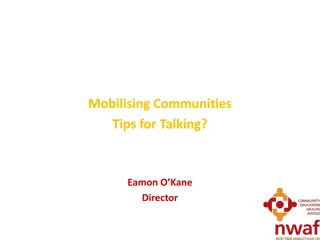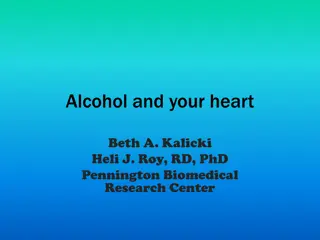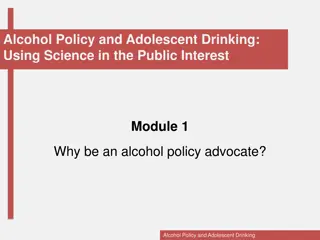Environmental Factors in Prevention of Alcohol Use by Young People in Sub-Saharan Africa
This study examines the environmental factors influencing alcohol use among youth in Sub-Saharan Africa. Insights into preventative measures are explored, shedding light on strategies to combat alcohol consumption in this region. Consideration is given to the role of societal and cultural influences, highlighting the importance of holistic approaches in addressing alcohol-related issues.
Download Presentation

Please find below an Image/Link to download the presentation.
The content on the website is provided AS IS for your information and personal use only. It may not be sold, licensed, or shared on other websites without obtaining consent from the author.If you encounter any issues during the download, it is possible that the publisher has removed the file from their server.
You are allowed to download the files provided on this website for personal or commercial use, subject to the condition that they are used lawfully. All files are the property of their respective owners.
The content on the website is provided AS IS for your information and personal use only. It may not be sold, licensed, or shared on other websites without obtaining consent from the author.
E N D
Presentation Transcript
Environmental factors in prevention of alcohol use by young people in Sub-Saharan Africa Neo K. Morojele, PhD University of Johannesburg South African Medical Research Council University of Cape Town University of the Witwatersrand
Overview The nature and extent of alcohol use Why prevention of alcohol use and misuse among adolescents and young adults matters Environmental/community risk and protective factors Implications for prevention of alcohol use by young people Final comment
Percentage (%) of adolescents (15-19) and young adults (20-24 years) who engage in heavy episodic drinking: 2000-2015 (WHO Afro Region) All adolescents and young adults Adolescents and young adults who drink 100 100 90 90 80 80 70 70 60 60 50 50 40 40 30 30 20 20 10 10 0 0 2000 2005 2010 2015 2000 2005 2010 2015 Adolescents 59.7 62.1 58.3 60.6 56.8 59.3 55.1 57.4 Adolescents Young adults 17.3 15.7 14.3 12.7 Young adults 26.9 24.8 22.9 20.8 Source: WHO (2018). Global Status Report on Alcohol and Health
Why prevention matters Numerous short-term and long-term consequences: Health: Non-communicable and infectious diseases Social/behavioural: Sexual risk behaviour; interpersonal violence; self-harm; injuries Academic: School drop-out/failure Alcohol Use Disorders (AUDs) Other mental health problems
Risk and protective factors for alcohol use by adolescents Societal Factors Culture Demographic and economic shifts Social inequality/socioeconomic disadvantage Community Factors Societal norms favouring use (e.g. mass media) Access to alcohol Community disorganistion Subjective adult norms favouring alcohol use School and Academic Environment Permissive drinking norms Availability of alcohol in school proximity Low academic aspirations and suboptimal performance in school Familial Environment Parental/caregiver consumption of alcohol (modelling) Insufficient time spent with adolescent Little monitoring Lack of nurturing in the home environment Individual Factors Engagement in rebellious and anti-social behaviours Low religious involvement Short term goals in life Depressive symptoms Poor sense of well-being Peers/Friends Peers alcohol use Peer engagement in anti-social behaviours
Societal norms: Advertising and marketing of alcoholic beverages Exposure to marketing associated cross- sectionally with alcohol consumption among young people in sub-Saharan Africa (Letsela et al., 2018; Morojele et al., 2018; Swahn et al. 2015) Systematic review of longitudinal studies shows significant associations between exposure to alcohol marketing and (a) alcohol use initiation and (b) heavy use among young people (Jernigan et al., 2017)
Percentage of adolescent and adult drinkers reporting exposure to different modes of advertising and marketing of alcohol brands and products Adolescents Adults 100 92.9 92.9 90 86.6 90 84.3 82.7 80 80.7 78.6 78.6 79.4 77.1 80 72.9 73.6 73.5 71.4 65.7 70 61.2 60.7 58.6 58.1 60 51.4 52 51.9 50 38.6 38.6 40 30 25.5 18.6 20 15.1 12.5 10 8.8 10 0 (Source: Morojele et al., 2018)
Access to alcohol Alcohol is easily accessible to adolescents (Parry et al., 2018) High density of drinking venues (Letsela et al., 2018) Drinking venues, taverns, shebeens often in close proximity of schools (e.g. Letsela et al., 2018) High access is associated with alcohol consumption (Morojele et al., 2018)
Community risk factors Exposure to community drunkenness (Parry et al., 2004) Exposure to violence/crime (Francis et al., 2019) Lacking a sense of belonging to one s community/low neighbourhood cohesion (Morojele et al., 2018)
Implications for Prevention EFFECTIVE ALCOHOL POLICY INTERVENTIONS NEED TO TARGET COMMUNITY RISK FACTORS AND ENHANCE PROTECTIVE FACTORS Restricting or completely banning alcohol advertising Marketing and advertising Restricting the availability of alcohol Access to alcohol Increasing prices through taxation Community disorganization/ disadvantage Increasing the legal age for purchasing and consuming alcohol
Final Comment Advertising and marketing, easy access to alcohol and community disadvantage are key community risk factors for alcohol use among young people Effective interventions are needed to address community risk factors There is a need for further research To identify challenges associated with the implementation of effective policy interventions To identify and evaluate the effectiveness of additional context-specific interventions for addressing alcohol use in sub-Saharan Africa
